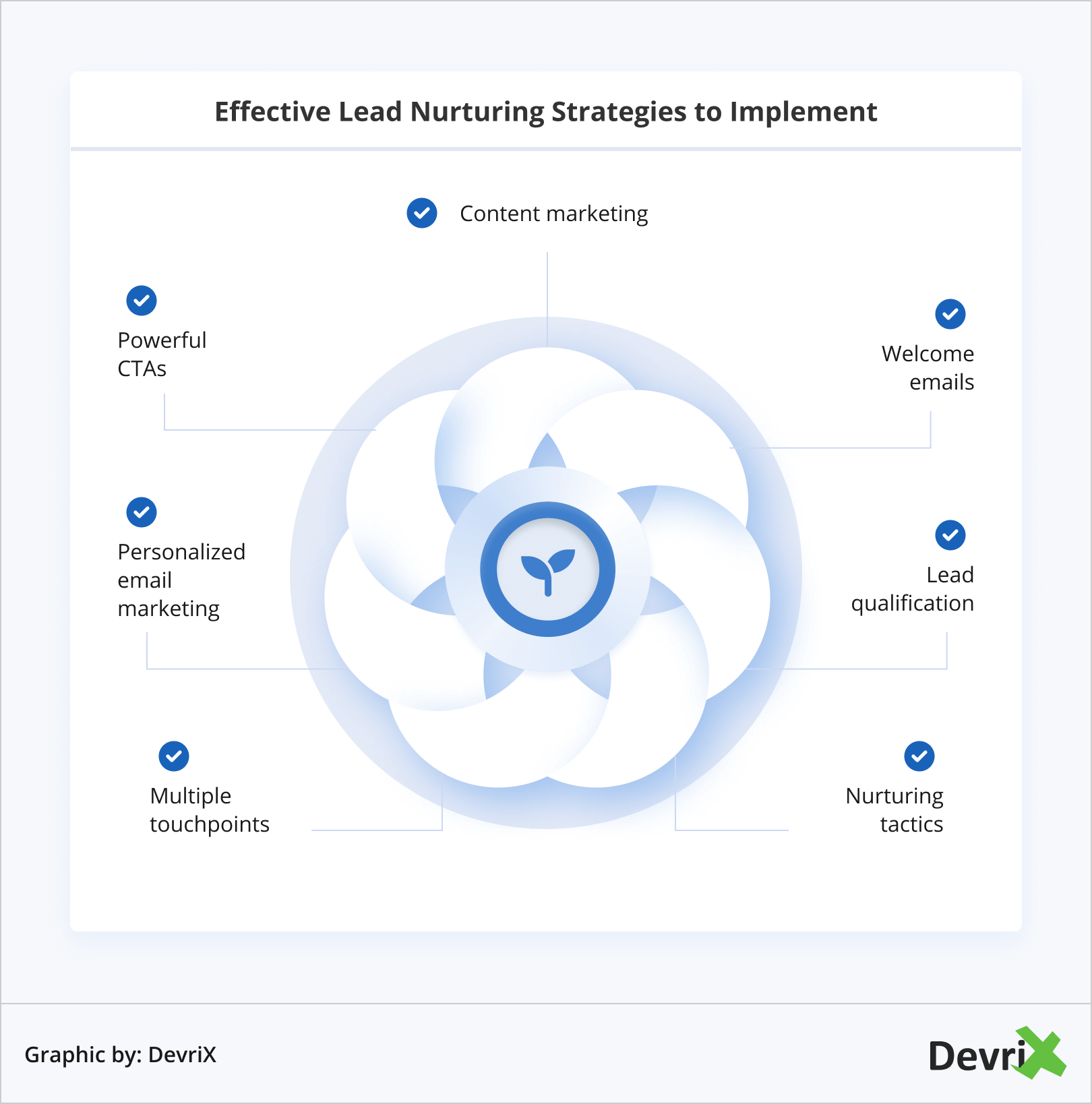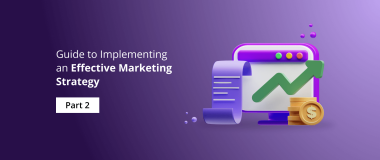Consumers today are more informed than ever before–that’s a fact. They know what their problems are, and they even know what could possibly be the solution to their problems long before you can start crafting your sales message to them.
Believe it or not, your target customers do so much online research for a given product or a service that they actually sell the product to themselves in the process! But, you want to spark that desired engagement between you and your target customers, and you can only do that by implementing lead nurturing strategies to your inbound marketing campaigns.
With lead nurturing, you cannot only build valuable customer connections and engagement, but you can also position yourself to increase your sales too. But how can you do this effectively? How can you connect the concept of lead nurturing with your marketing strategy?
Related: Are You Successfully Converting Leads? Lead Conversion Guide For Companies
What Is Lead Nurturing?
In essence, lead nurturing is a process where you build a long-lasting relationship with your target audience. Both, you and your customers, need to benefit from this relationship.
For instance, you can offer them valuable industry insight in the form of a “lead magnet” (ebook, case study) in exchange for their contact information. With that, you can build your brand credibility and get the chance to educate your prospects further about the benefits of your products/services. But this does not work for every customer and you can’t convert every lead with the same lead magnet.

We are talking about a tactical approach to lead nurturing. In order to skyrocket your conversion rates, you will have to implement different lead nurturing strategies, from primary ones all the way to advanced strategies.
The Process of Lead Nurturing

To define it further, lead nurturing is a process where you develop relationships with your target customers in each of the stages of your sales funnel and with every step of the customer’s buying journey. This will narrow your marketing approach so that you can actually listen to your customer and come up with the content and products that will help them solve their problems or address their needs.
In order to do that, first, you must acquire leads through a good lead nurturing campaign. You can’t just choose a random prospect. But, generating high-quality potential clients is not an easy task. You need to ask yourself how you are going to get to those contacts. Let the statistics speak for themselves about how hard it is to convert people into customers:
- Hubspot reports that 65% of businesses say generating traffic and leads is their biggest marketing challenge.
- According to Marketo, about 96% of visitors who come to your website aren’t ready to buy (yet).
- Hubspot states that 74% of companies say converting leads into customers is their top priority.
- According to Demand Gen, oOnly 29% of brands nurture their existing customers beyond the initial purchase.
- Pinpoint Market Research and Anderson Jones PR states that 93% of B2B buying processes start with an online search.

You can take a lot away from the statistics above. However, the most important thing that you have to understand is that today, the prospect’s journey is more complex than ever before and that the lead generation and strategies have become more complex and sophisticated too.
Doing this in a highly purchase-driven market implies forming customer relationships with a proper scoring system and the development of a sturdy content marketing plan.
Related: Top 10 Lead Conversion Strategies To Boost Your Business Success
Scoring Leads
In order to form lead nurturing campaigns you can use, your marketing and sales team need to work together and try to assess the business and marketing strategies and where they can find the best people online. You will also have to develop a lead scoring strategy to determine whether or not the person is the right fit for your product or service.
Your scoring system needs to be detailed and relevant to your business needs while taking into account your niche marketplace, your industry, and your target audience.
1. Lead Fit
A lead fit outlines how a particular prospect meets the criteria of your ideal target customer. This will define from the start of the buyer’s journey to whether or not a person is worth pursuing at all. The lead fit criteria is segmented into three categories:
- Demographic – The person’s profession, the company that he/she works in, location, work experience, etc.
- Firmographic – The company where the prospect works, the size of the company, annual revenue, etc.
- BANT – Stands for Budget, Authority, Need & Time.

Information about the lead fit of a buyer can be collected by forms, surveys, email subscriptions or just by doing an online search on Google.
2. Interest
The best way to evaluate people’s interest in your product or service is to track your brand’s overall behavior. Do your prospects visit your website often enough? Do you have any type of engagement with them on social media? You will have to attribute each of these behaviors with a scoring number, for instance:
- Visiting page/blog post: +1 point
- Visiting Jobs page: -20 points
- Engaging with primary stage content: +5 points
- Email opens: +10 points
- Email replies: +20 points
- Social media shares: +5 points
- Opened pricing packages: +30 points
- Mid-stage content: +10 points
- Late-stage content: +20 points

3. Behavior
If you carefully monitor the lead’s behavior, you will get valuable data on whether or not he/she is sincere about buying your product. You should assign low values to actions such as browsing your website. Furthermore, you need to assign high values to behaviors such as filling an opt-in form and downloading your lead magnet.
4. Timing and Buying Journey Phase
Ranking the buyer’s quality will help you decide the stage of your sales funnel that the person can reach. In order to score a lead for the buying stage you will have to know the person’s exact behaviours within the top, middle and bottom of your sales funnel.
Give higher scores to people that are constantly on your product pages, pricing package pages, and the ones that want to conduct a product demo.
5. Company Size and Budget
If you’re in the B2B segment, you have to carefully assess every single company that left its credentials in your landing page opt-in forms. Not everyone wants to buy from you, perhaps they only want your lead magnet (ebook) to learn more about your business process and tactics (competitors).
Not every company is a sales-ready B2B lead, some of them are the employees of these companies who fill out the opt-in form because they’re interested in your product, however, that doesn’t necessarily mean that they can afford your product/service.

Effective Lead Nurturing Strategies You Should Be Using
1. Content Marketing

It is 2018, and today, most users are aware that they need to educate themselves about a given product or a service before they decide whether or not to enter through your sales funnel and eventually become your customers. This is where content marketing steps in – providing your brand with a voice that will constantly communicate with your target customers and continuously foster the relationship with them.
In essence, content marketing is the process of developing valuable content that is relevant to your target audience (videos, blog posts, ebooks, infographics, podcasts, webinars). This will attract your prospects and allow them to engage with your brand online.
Potential customers already research the Internet for questions and solutions to their problems. So, to start a conversation and educate them all the way to the sale, you will have to position your brand so that it provides all the answers to their questions. You will have to develop different content for each stage of the buyer’s journey, and with that, help your buyers move through your sales funnel.
Related: Step-by-Step Guide To Simple and Awesome Content Marketing
Content Marketing and Its Connection to Email Marketing
Gaining the attention of your target audience through content marketing can build and enhance their relationship with your brand, thus making them return to your webpage for more. But, in order to make your content marketing and lead generation strategy more effective, you will have to integrate an email marketing process, too.
Even with all the social media trends and emerging platforms, email marketing is still one of the best ways to reach your target customers. This is because email marketing has the best conversion rate per session, even more than search and social combined. It is the action of sending an email message to a group of carefully collected group of people to build and nourish a relationship between them and your brand.
Email marketing will help you build the relationship you want to achieve. Your email subscribers have already confirmed that they want to hear more from you by personally providing you with information such as their name, contact information or the webpage of the company they work for, something which cannot be said about social media channels.
This information will help you create a personalized intro message for the receiver that can be sent automatically, as opposed to writing messages or replying to comments in social media.
Related: 12 Ways to Increase Conversions Through Email Marketing
When you merge your email marketing with your content marketing strategy, you become better at lead nurturing and you can demonstrate what sets you apart from your competitors.
A successful email marketing process needs to have five major qualities:
- Trustworthiness – Give the prospect transparent and exact expectations about the campaign.
- Relevant – Keep your email marketing efforts highly relevant to a narrow niche audience.
- Actionable – Add a Call to Action to prompt additional questions or comments from the prospect.
- Coordinated – Use email marketing as the axis that brings social and web content together.
- Strategical – Optimize the email marketing campaign for conversions to increased sales.

Content Marketing and Your Website
Social media will be an important weapon when it comes to lead nurturing. Every social media platform has a different kind of content approach that consequently, requires a different social media marketing tactic. This means that your content can’t be universally used on all social media channels. That’s why you have to know the social media channels that your target audience use the most and strategically place your content there.
Related: 50 Best Tools for Successful Content Marketing
You will have to decide which type of content to use (image, video, ebook, infographic, etc.) on each social media platform.
To successfully nurture customers with your content via social media, remember the following:
- Keep the tone conversational and friendly.
- Have high-quality and attractive content for your target audience.
- Include a powerful CTA to make people take the desired action towards your sales funnel.
- Provide value in your social media posts, don’t assume that people will want to explore further just by noticing a post in the feed.

2. Welcome Emails
In most cases, your welcome emails are the initial point of contact between you and your prospects. It’s the first step in your lead nurturing strategy. It is perhaps the most important email that you can send to your potential leads. That’s why it must be written in such a way, that it leaves a good impression and encourages your prospect to start a conversation.
You can’t send this type of email to potential customers that are not yet qualified as potential leads for your business. Because doing that is the same thing as entering into someone’s home uninvited.
That’s why you have to build your email list. No amount of promotions, social media campaigns or “amazing opportunities” can replace the quality of the right email list. Someone has to invite you first into their inbox by filling out the carefully integrated opt-in form on your website. In the opt-in form, you can ask potential customers to sign up for your newsletter or download your free e-book.
A successful welcome email helps you build a long-lasting relationship by inviting users to explore the industry further and to learn how your business can solve his/her problems. If the person doesn’t start a conversation with your business after the first welcome email, you can move the lead to the next lead nurturing phase.
The urgency of your welcome emails matters too, as up to 75 percent of prospects that subscribed to your email list expect the welcome message immediately. Every postponed second could potentially stop them from connecting, and therefore, result in a lost opportunity for conversion.
3. Lead Qualification

Lead qualification starts with the initial inbound marketing efforts. Usually, this begins with your target customers filling out an opt-in form to download or receive something useful in return. Initial stages of inbound marketing also give the target customer an opportunity to ask for more details about your business and products.
If you fail to qualify sales-ready leads and engage with them too early, you may risk your chance to nurture them further. But also, if you decide to engage with them too late, you will jump every stage of the funnel and the chance to successfully nurture them into a sale.
This is why you must recognize which of the prospects are sales-ready by measuring their response to your CTAs or by using the lead scoring tactic that we mentioned above. The recent website activity of the prospects, their demographic elements and how they engage with your content all matter when it comes to qualifying leads.
4. Nurturing Journey

A nurturing journey is basically the core of your inbound marketing strategy. If you already know that more than 50% of the people are still not ready to purchase your product/service, you have to assume that they are doing their research to evaluate your brand before they decide whether or not to purchase a particular product or use a given service.
Mapping out a lead nurturing journey for your best prospects and strategically positioning your brand to match every stage of the journey can ease them into entering your sales funnel. And that is the main objective of the lead nurturing journey, to earn the trust and the interest of your prospects so that they will be open to understanding how they can become your clients.
5. Multiple Touch Points
When you approach people online, you will need an average of 10 points of engagement with your business in order to turn them into sales-ready leads. What this means is that you will have to provide your social media and web visitors with at least 10 opportunities to engage with and contact you.
This may sound like a lot of work, but it is important to recall that you have to create different content for each stage of your customer journey, addressing each of the prospect’s problems that your product or service can solve. The multiple touchpoints between your brand and your target customer need to be relevant and to be able to gradually build trust.
Having an automated lead nurturing email sequence process can do a lot of the legwork for you when it comes to multiple touches. You can send out an email per week inside your sequence just to warm up your prospects. This is an excellent way to carefully present your brand to the customers.
We suggest sending one email per week for a 1-month period after the prospect has joined your email list. After that, based on the person’s interaction, you could proceed to the next stage of your email sequence.
Prepare each of the emails upfront, using case studies, your portfolio, lessons learned, stories, articles, etc. The initial investment of time and effort will pay you off with a strong list of potential buyers.
6. Personalized Email Marketing

When it comes to a successful lead cultivation process, we cannot emphasize enough the importance of personalization in the email copy. A personalized email message that incorporates the person’s name and a message that is relevant to his/her most recent activity on your website has the potential to skyrocket the interaction with your brand and increase your revenue. Understandably, this is a much better strategy than just a generic and templated email.
The main reasons for the success of the personalized lead nurturing approach over social media marketing are clear – it makes individuals feel appreciated and special and it shows that you see them as human beings, instead of just sales numbers. It also gives them the feeling of exclusivity in their inbox, that your message is strictly intended for their attention only, something that can’t be achieved with social media marketing posts.
7. CTA Journeys

What a CTA journey does is invite people to engage with your business at a given stage and place on your website or on your social media channel. The call-to-action journeys are usually comprised of two to six separate communication touches that are spaced by a specific number of days.
These CTAs are simple, direct and encourageable there to spark the conversation or to engage with at least one of your messages (such as demo product invitations, free trials).
Leads that have positively responded to a CTA are ready to buy the product. You have to figure out that this is the point when the person wants to buy. That’s when the nurturing ends and the sales closing process begins. It will all come down to your content, words and offers, and how they can improve your customer’s life.

Wrapping Up
Your lead nurturing strategies has to constantly evolve and grow together with your target customers. You have to persistently nurture your potential buyers. Follow each of the strategies above and remember–it is all about building relationships. Convincing your customers that you’re the best solution for their problems will then come naturally.




